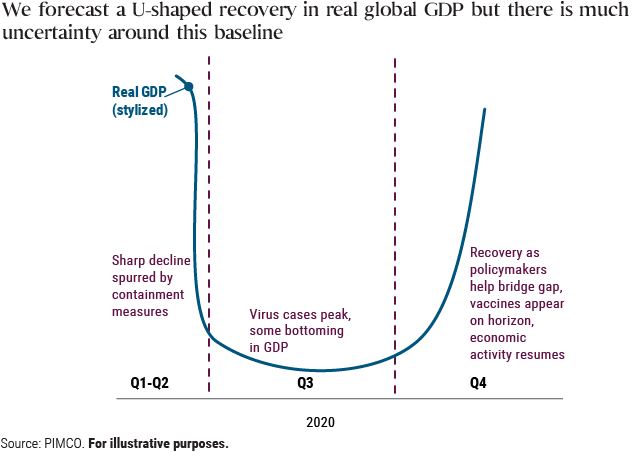It looks like you're new here. If you want to get involved, click one of these buttons!
https://washingtonpost.com/business/on-small-business/fed-to-buy-junk-bonds-and-lend-to-states-in-fresh-virus-support/2020/04/09/1baf9420-7a60-11ea-a311-adb1344719a9_story.htmlIn a move that surprised some investors, the central bank will also expand its bond-buying program to include debt that was investment-grade rated as of March 22 but was later downgraded to no lower than BB-, or three levels into high yield. It’ll also buy exchange-traded funds, the preponderance of which will track investment-grade debt along with some that track speculative-grade debt. Together, the programs will support as much as $850 billion in credit.
.....as well as fund the purchases of some types of......collateralized loan obligations and commercial mortgage-backed securities.
It would be very time consuming to find ER for previous years but from memory, Fidelity lowered ER for their index funds years ago to compete with VG.
From what little I can find, it seems that FXAIX overall had the lower ER all these years. I look forward to seeing the ER numbers for "all these years".
I have also read that some of the buying has been driven by funds with a mandate to own the constituents of various indexes.Another maybe bullish sign... This article from the NYT says it's institutional investors (aka smart money) driving this one while Mom and Pop investors (like me) wait it out.
I won't be adding Smead Value to my shopping list. I regularly drive by one of the largest ghost town malls in the country.Cole Smead, a portfolio manager at the Smead Value Fund, has been snapping up bargains in beaten-up parts of the market, like oil and energy producers, homebuilders and shopping-mall companies, that are closely tied to short-term swings in the economy.
I look at numbers like that on top of the burden of corporate leverage, and I wonder what could happen if their debt is down graded.Goldman Sachs economists, for example, expect the gross domestic product to contract at an astounding 34 percent annual rate in the second quarter, with unemployment reaching roughly 15 percent.
That doesn't sound like the sort of discipline Old_Skeet describes as his process.And don’t underestimate the fear of missing out. As shares rise, professional money managers feel pressure to buy stocks to protect their reputations.
“If you wait until the coast is clear, you will have missed a huge part of the gains,” said Matt Maley, chief market strategist at Miller Tabak, a trading and asset management firm. “And professional investors can’t afford to do that.”
https://reuters.com/article/us-health-coronavirus-fed-mainstreet/fed-rolls-out-2-3-trillion-to-backstop-main-street-local-governments-during-crisis-idUSKCN21R1WYIn announcing what may prove its most groundbreaking step in the crisis fight, Fed chair Jerome Powell said the Fed’s role had now broadened beyond its usual focus in keeping markets “liquid” and functioning, to helping the United States get the economic and financial space it needs to fix a dire health emergency.
https://nytimes.com/2020/04/09/business/economy/fed-to-buy-municipal-some-riskier-debt-as-part-of-expansive-programs.htmlThe Federal Reserve said it would buy some junk bonds in a package of announcements that could pump $2.3 trillion into the economy
https://bloomberg.com/news/articles/2020-04-09/powell-pushed-to-edge-of-fed-s-boundaries-in-fight-for-economyBy pushing the Federal Reserve into corners of financial markets it has mostly shunned in its 106-year history, Chairman Jerome Powell is running into some thorny questions.
Like, for instance, how to maintain independence from the U.S. Treasury when the economic-support package Congress passed says they should work together? Or whether the same guidelines for companies receiving federal aid, which range from compensation limits to off-shoring restrictions, apply to the Fed if it gets more money from Treasury? And how about which companies -- and perhaps eventually, municipalities and states -- are invited to borrow and at what cost?
The Fed’s steps into credit allocation are tantamount to “a complete redesign of central banking on the fly.”
The CARES Act “forces the Fed into this almost intimate relationship with Treasury,” said Mark Spindel, co-author of a book about the relationship with Congress. “This is fiscal policy, picking winners and losers.”
Obviously, I don't know what type of bond funds you have already or will eliminate. I can only offer this, as we all "see" the markets from our own knowledge and perspective.I am eliminating bonds from my self managed portfolio as much as I can
Nothing to do with insecurity, trying to be accurate. FXAIX didn't perform better because it didn't have a lower ER all these years. The main difference between me and others is that I supply numbers and not just narrative ;-)Your contrib is so valuable, but are you really so insecure you have to impugn ('obsess') anyone who offers even mild corrections or challenges ?
Anyway, let me add that FXAIX does not outperform either Vanguard SP500 product if you go back to their spring 1988 origin, only more recently.
See 15 years of risk/reward(link).I think you got the mandate wrong there. D&C is not required to beat the S&P 500. They are acting to select value stocks which they deem safer and worthy of their clients money. It's obvious to me that many investors do, judging by the AUM. For many of them it's not just all about who has the biggest pile of money at the end of the day. Not everyone can make trades after the fact.
We are seeing the first-ever recession by government decree – a necessary, temporary, partial shutdown of the economy aimed at preventing an even larger humanitarian crisis. What is also different this time is the unprecedented speed and size of the monetary and fiscal response, as policymakers and monetary authorities try to prevent a recession turning into a lasting depression.

We believe this crisis is likely to leave three long-term scars:
Globalization may be dialed back
More private and public debt
Shift in household saving behavior
We believe a caution-first approach is warranted in an effort to protect against permanent capital impairment.
© 2015 Mutual Fund Observer. All rights reserved.
© 2015 Mutual Fund Observer. All rights reserved. Powered by Vanilla